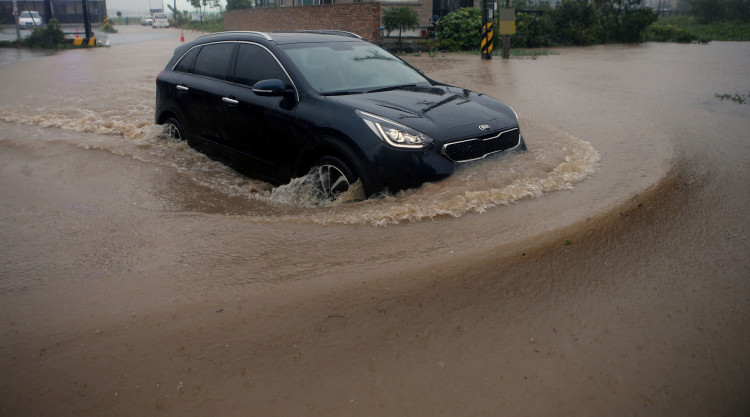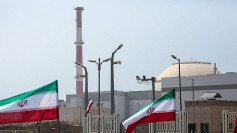South Korea lifted its typhoon alert to the highest level on Monday (Sep 5) as Typhoon Hinnamnor approached, forcing school closures, the suspension of some business activities, and flight cancelations.
After hitting waters around Jeju Island late Monday, Hinnamnor is projected to make landfall southwest of the port city of Busan early Tuesday.
President Yoon Suk-yeol said he will be on emergency alert, a day after asking authorities to do everything possible to limit the typhoon's impact.
"Very strong winds and heavy rains are expected across the country through to Tuesday due to the typhoon, with very high waves expected in the coastal region along with storm and tsunami," the Korea Meteorological Administration (KMA) said.
The southern region of the country was battered by wind and rain as the typhoon moved north at a speed of 24 km/h.
The Hinnamnor is traveling northeast toward Sapporo, Japan, on its current route.
According to their websites, Korean Air Lines and Asiana Airlines have canceled the majority of their Monday flights to Jeju Island, while low-cost airlines like Air Seoul and Jin Air have also canceled some flights.
The manufacture of giant OLED TVs at LG Electronics' Gumi facilities will stop on Tuesday, according to a company representative. Meanwhile, the steelmaker POSCO will stop operating all of its furnaces and other production facilities on Tuesday, according to the Yonhap news agency.
Hyundai Heavy Industries, Daewoo Shipbuilding & Marine Engineering (DSME), and Samsung Heavy Industries announced early Tuesday that they would cease operations.
SK Innovation, the parent company of South Korea's largest refiner, SK Energy, has asked carrier ships not to operate until the storm passes.
KMA categorizes typhoons into four categories: normal, strong, very strong, and super strong, and Hinnamnor is projected to hit the country as a "very strong" typhoon. Typhoons in that category have wind speeds of up to 53 meters per second.
Following the warnings issued for the southern island of Jeju, warnings have been issued for the southern cities of Gwangju, Busan, Daegu, and Ulsan. On Sunday, the Central Disaster and Safety Countermeasures Headquarters raised its typhoon alert level to the highest in its four-tier system for the first time in five years
Rain fell on Busan City and its surrounding areas throughout the weekend, and more is expected over the remainder of the country on Monday and Tuesday.
Although more than 100 individuals have been evacuated and at least 11 facilities have suffered flood damage, no fatalities have been reported as of yet.






